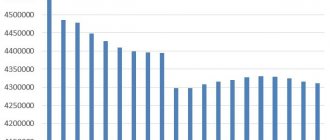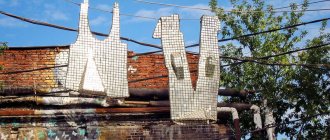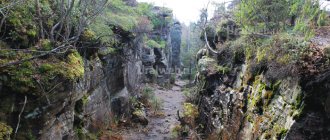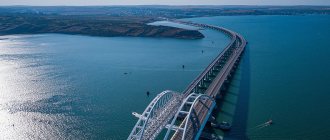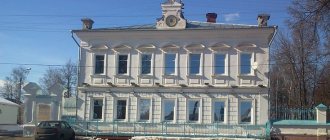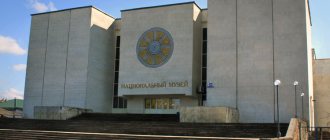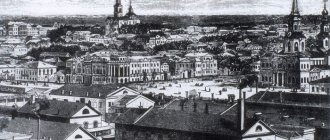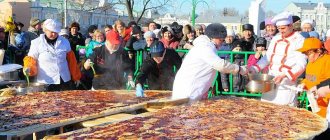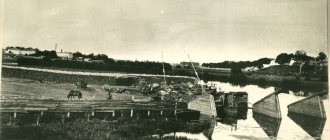Photo of the square from 1905.
© swuy
Ekaterinburg is the third largest city in Russia, the administrative center of the Sverdlovsk region and the capital of the Urals. Yekaterinburg is the fourth most populous city (after Moscow, St. Petersburg and Novosibirsk). The Sverdlovsk region is one of the most developed regions in Russia, it is rich in minerals and raw materials. The main industry is heavy engineering and metallurgy. The Sverdlovsk region is located in a territory separated from ethnic conflicts and is politically stable.
Ekaterinburg is easy to find on a geographical map of the Euro-Asian continent; it is located in the middle of the Ural Mountains, which separate Europe and Asia. The Europe-Asia Obelisk, located 25 km west of the city, defines the border between the two continents. Thus, Yekaterinburg is located at the crossroads of two continents, which determines its political, economic and cultural specificity.
Yekaterinburg is the capital of the Ural Federal District, whose territory is approximately 2 million km2. The territory has a major oil and gas field, rich oil and gas reserves, rich reserves of iron and polymetallic ores. The world's largest metallurgical enterprises are located in the Urals, thanks to their great industrial and intellectual potential. Yekaterinburg exports raw materials and heavy engineering products, and imports food and consumer goods. Business and investment in the city are very well developed.
Yekaterinburg, like the entire Sverdlovsk region, is located in a time zone designated by the international standard as Yekaterinburg Time Zone. The offset relative to UTC is +5:00. Relative to Moscow time, the time zone has a constant offset of +2 hours. Yekaterinburg time differs from standard time by one hour, since maternity time is in effect in Russia.
Current data
Yekaterinburg is a million-plus city in the center of Russia, the administrative center of the Sverdlovsk region and the capital of the Ural Federal District. It is located in the Middle Urals, on the eastern spurs of the Ural Mountains. The city was founded in 1723, when, by personal decree of Peter I, construction of an ironworks began in the upper reaches of the Iset River, named after the wife of Peter I, Catherine.
In 1924, Yekaterinburg was renamed Sverdlovsk, in honor of one of the Bolshevik leaders, chairman of the All-Russian Central Executive Committee Ya.M. Sverdlov. In 1991, the city was returned to its original name.
Currently, Yekaterinburg is one of the largest industrial, transport, administrative, cultural, scientific and educational centers of the Russian Federation.
Chkalovsky
The largest district of the city is spread over an area of 402 square kilometers. The city was founded around the Uktus plant in 1704. Today there are 42 large enterprises operating here, providing jobs to the majority of residents of this part of the city. Chkalovsky is the industrial heart of the city. Therefore, the state of the environment leaves much to be desired. However, it is one of the fastest growing parts of the city. Most of the buildings are residential buildings.
Responsible for infrastructure:
- almost 30 medical institutions;
- 84 educational institutions;
- 3 Houses of Culture;
- 4 art schools;
- 8 libraries.
Almost 90 sports facilities and several hundred shops, cafes and other service establishments. Population - 275.5 thousand people.
Development of the Chkalovsky district of Yekaterinburg
Statistics by year
Since its founding, due to its convenient geographical location, the city has continuously expanded. Its population also grew almost continuously. In the twenties of the last century, the number of city residents exceeded 100,000 people, and in 1967 Ekaterinburg became a millionaire city. Only in the nineties of the twentieth century and in some zero years of the twenty-first century was there a noticeable natural depopulation of the urban population due to high mortality and low birth rates.
At the time of the 2002 All-Russian Population Census, 1,293,537 people lived in the city, and according to the 2010 All-Russian Census, the number of residents here this year reached 1,349,772 people. As of 2022, the number of city residents was 1,483,119 people.
As of January 1, 2022, according to Rosstat, the city had a population of 1,493,749 people, with a population density of 3,192 people per square kilometer. Now, in terms of the number of residents, the city ranks fourth in the Russian Federation, second only to Novosibirsk, St. Petersburg and Moscow.
| Census or assessment year | Population | Annual increase (decrease) |
| 1986 | 1310000 | 2000 |
| 1987 | 1331000 | 21000 |
| 1988 | 1351000 | 20000 |
| 1989 | 1364621 | 13621 |
| 1990 | 1304000 | -60621 |
| 1991 | 1375000 | 71000 |
| 1992 | 1371000 | -4000 |
| 1993 | 1358000 | -13000 |
| 1994 | 1347000 | -11000 |
| 1995 | 1278000 | -69000 |
| 1996 | 1276000 | -2000 |
| 1997 | 1275000 | -1000 |
| 1998 | 1272000 | -3000 |
| 1999 | 1272900 | 900 |
| 2000 | 1266300 | -6600 |
| 2001 | 1256900 | -9400 |
| 2002 | 1293537 | 36637 |
| 2003 | 1293500 | -37 |
| 2004 | 1334400 | 40900 |
| 2005 | 1304300 | -30100 |
| 2006 | 1308400 | 4100 |
| 2007 | 1315100 | 6700 |
| 2008 | 1323000 | 7900 |
| 2009 | 1332264 | 9264 |
| 2010 | 1349772 | 17508 |
| 2011 | 1350100 | 328 |
| 2012 | 1377738 | 27638 |
| 2013 | 1396074 | 18336 |
| 2014 | 1412346 | 16272 |
| 2015 | 1428042 | 15696 |
| 2016 | 1444439 | 16397 |
| 2017 | 1455904 | 11465 |
| 2018 | 1468833 | 12929 |
| 2019 | 1483119 | 14286 |
| 2020 | 1493749 | 10630 |
Number of residents of Yekaterinburg for 2022 by city district:
| Area | How many people lived in 2022 |
| Verkh-Isetsky | 221207 |
| Railway | 165291 |
| Kirovsky | 228864 |
| Leninist | 156723 |
| October | 148981 |
| Ordzhonikidzevsky | 286482 |
| Chkalovsky | 275571 |
In 2009, for the first time in many years, the number of births exceeded the number of deaths. Since then, the city has experienced natural population growth. Demographic situation in Yekaterinburg in 2005 – 2018. in absolute numbers:
| Year | Total births | Total deaths | Natural increase (loss) |
| 2005 | 13374 | 18183 | -4809 |
| 2006 | 13858 | 17188 | -3330 |
| 2007 | 14399 | 16821 | -2643 |
| 2008 | 15867 | 16853 | -1040 |
| 2009 | 16986 | 16366 | 620 |
| 2010 | 17901 | 16180 | 1721 |
| 2011 | 18317 | 16142 | 2175 |
| 2012 | 19633 | 16351 | 3282 |
| 2013 | 20352 | 15923 | 4429 |
| 2014 | 20965 | 16437 | 4528 |
| 2015 | 23206 | 16421 | 6785 |
| 2016 | 22529 | 16668 | 5861 |
| 2017 | 20087 | 15979 | 4108 |
| 2018 | 19285 | 16337 | 2948 |
Demographic situation in Yekaterinburg in 2005 – 2022. in terms of 1000 people:
| Year | Born per 1000 people | Deaths per 1000 people | Natural increase per 1000 people |
| 2005 | 10,0 | 13,6 | -3,6 |
| 2006 | 10,3 | 12,8 | -2,5 |
| 2007 | 10,7 | 12,3 | -1,8 |
| 2008 | 11,7 | 12,4 | -0,8 |
| 2009 | 12,4 | 11,9 | 0,5 |
| 2010 | 12,9 | 11,7 | 1,3 |
| 2011 | 13,1 | 11,5 | 1,6 |
| 2012 | 13,8 | 11,5 | 2,3 |
| 2013 | 14,2 | 11,1 | 3,1 |
| 2014 | 14,4 | 11,3 | 3,1 |
| 2015 | 15,8 | 11,2 | 4,6 |
| 2016 | 15,2 | 11,2 | 4,0 |
| 2017 | 13,4 | 10,7 | 2,7 |
| 2018 | 12,8 | 10,8 | 2,0 |
Life expectancy is also growing, which in 2013-2014 was 69.8 years, in 2016 it increased to 72.9 years, and by the beginning of 2022 it exceeded 74 years.
Sverdlovsk is the administrative center of the Ural region
1925-1929 - a time of great change. A water supply system was built and a powerful radio station was put into operation. Gradually, the life of the townspeople became more active and eventful. The year 1932 was marked by the opening of the Ural branch of the USSR Academy of Sciences. 27 research institutes worked in various industries. The opening of the Koltsovo military airfield, the reconstruction of enterprises, and the construction of new factory buildings are important milestones of those years.
By the beginning of the 40s of the 20th century, 85 enterprises of union and republican significance were successfully operating in the city. Almost half of all output came from mechanical engineering and metalworking. Sverdlovsk prospered, residents had jobs and decent wages, dreamed about the future, believed in a happy tomorrow.
Ethnic composition
Currently, representatives of more than a hundred nationalities live in the city, the vast majority of which are Russian. There are also quite a few Tatars, Ukrainians and Bashkirs.
| Nationality | Total | % of those who indicated nationality | % from all of us |
| Russians | 1106688 | 89,03850 | 80,01047 |
| Tatars | 46232 | 3,71959 | 3,34245 |
| Ukrainians | 12815 | 1,03103 | 0,92649 |
| Bashkirs | 11922 | 0,95918 | 0,86193 |
| Mari | 6481 | 0,52143 | 0,46856 |
| Azerbaijanis | 6381 | 0,51338 | 0,46133 |
| Tajiks | 5868 | 0,47211 | 0,42424 |
| Armenians | 5271 | 0,42408 | 0,38108 |
| Kyrgyz | 4860 | 0,39101 | 0,35136 |
| Jews | 4339 | 0,34909 | 0,31370 |
| Uzbeks | 4072 | 0,32761 | 0,29439 |
| Belarusians | 3672 | 0,29543 | 0,26548 |
| Udmurts | 2666 | 0,21449 | 0,19274 |
| Mordva | 2664 | 0,21433 | 0,19260 |
| Chuvash | 2508 | 0,20178 | 0,18132 |
| Germans | 2383 | 0,19172 | 0,17228 |
| Chinese | 1678 | 0,13500 | 0,12131 |
| Kazakhs | 1304 | 0,10491 | 0,09428 |
| Yazidis | 925 | 0,07442 | 0,06687 |
| Gypsies | 863 | 0,06943 | 0,06239 |
| Georgians | 784 | 0,06308 | 0,05668 |
| Koreans | 709 | 0,05704 | 0,05126 |
| Lezgins | 682 | 0,05487 | 0,04931 |
| Moldovans | 639 | 0,05141 | 0,04620 |
| Greeks | 597 | 0,04803 | 0,04316 |
| Poles | 476 | 0,03830 | 0,03441 |
| Chechens | 300 | 0,02414 | 0,02169 |
| Komi-Permyaks | 273 | 0,02196 | 0,01974 |
| Avars | 267 | 0,02148 | 0,01930 |
| Bulgarians | 259 | 0,02084 | 0,01872 |
| Ossetians | 239 | 0,01923 | 0,01728 |
| Yakuts (Sakha) | 228 | 0,01834 | 0,01648 |
| Vietnamese | 208 | 0,01673 | 0,01504 |
| Buryats | 181 | 0,01456 | 0,01309 |
| Komi | 167 | 0,01344 | 0,01207 |
| Turkmens | 154 | 0,01239 | 0,01113 |
| Lithuanians | 153 | 0,01231 | 0,01106 |
| Tabasarans | 134 | 0,01078 | 0,00969 |
| Kumyks | 126 | 0,01014 | 0,00911 |
| Tuvans | 121 | 0,00974 | 0,00875 |
| Latvians | 116 | 0,00933 | 0,00839 |
| Dargins | 113 | 0,00909 | 0,00817 |
| Laktsy | 108 | 0,00869 | 0,00781 |
| Talysh | 100 | 0,00805 | 0,00723 |
| Estonians | 97 | 0,00780 | 0,00701 |
| Uyghurs | 91 | 0,00732 | 0,00658 |
| Udini | 89 | 0,00716 | 0,00643 |
| Assyrians | 87 | 0,00700 | 0,00629 |
| Kabardians | 87 | 0,00700 | 0,00629 |
| Turks | 87 | 0,00700 | 0,00629 |
| Ingush | 85 | 0,00684 | 0,00615 |
| Mongols | 78 | 0,00628 | 0,00564 |
| Gagauz | 64 | 0,00515 | 0,00463 |
| Tsakhur | 54 | 0,00434 | 0,00390 |
| Kurds | 53 | 0,00426 | 0,00383 |
| Finns | 53 | 0,00426 | 0,00383 |
| Serbs | 51 | 0,00410 | 0,00369 |
| Muncie | 44 | 0,00354 | 0,00318 |
| Abkhazians | 42 | 0,00338 | 0,00304 |
| Khakassians | 42 | 0,00338 | 0,00304 |
| Arabs | 39 | 0,00314 | 0,00282 |
| Khanty | 37 | 0,00298 | 0,00267 |
| Kalmyks | 34 | 0,00274 | 0,00246 |
| Karachais | 33 | 0,00266 | 0,00239 |
| Romanians | 33 | 0,00266 | 0,00239 |
| Rutulians | 32 | 0,00257 | 0,00231 |
| Karelians | 26 | 0,00209 | 0,00188 |
| Pamiris | 24 | 0,00193 | 0,00174 |
| Hungarians | 23 | 0,00185 | 0,00166 |
| Crimean Tatars | 23 | 0,00185 | 0,00166 |
| Altaians | 21 | 0,00169 | 0,00152 |
| Americans | 18 | 0,00145 | 0,00130 |
| Japanese | 18 | 0,00145 | 0,00130 |
| Georgian Jews | 17 | 0,00137 | 0,00123 |
| Nogais | 16 | 0,00129 | 0,00116 |
| Slovenians | 16 | 0,00129 | 0,00116 |
| Dungans | 15 | 0,00121 | 0,00108 |
| Spaniards | 14 | 0,00113 | 0,00101 |
| Nenets | 14 | 0,00113 | 0,00101 |
| Bosnians | 13 | 0,00105 | 0,00094 |
| Indians | 13 | 0,00105 | 0,00094 |
| Italians | 13 | 0,00105 | 0,00094 |
| Persians | 13 | 0,00105 | 0,00094 |
| Aguly | 12 | 0,00097 | 0,00087 |
| Adyghe people | 11 | 0,00089 | 0,00080 |
| Besermyane | 11 | 0,00089 | 0,00080 |
| Afghans | 8 | 0,00064 | 0,00058 |
| Mountain Jews | 8 | 0,00064 | 0,00058 |
| Nagaibaki | 8 | 0,00064 | 0,00058 |
| Circassians | 8 | 0,00064 | 0,00058 |
| Nivkhi | 7 | 0,00056 | 0,00051 |
| French people | 7 | 0,00056 | 0,00051 |
| Balkars | 6 | 0,00048 | 0,00043 |
| Cubans | 6 | 0,00048 | 0,00043 |
| Macedonians | 5 | 0,00040 | 0,00036 |
| Czechs | 5 | 0,00040 | 0,00036 |
| Shors | 5 | 0,00040 | 0,00036 |
| Evenks | 5 | 0,00040 | 0,00036 |
| Karakalpaks | 4 | 0,00032 | 0,00029 |
| Slovaks | 4 | 0,00032 | 0,00029 |
| Abazins | 3 | 0,00024 | 0,00022 |
| British | 3 | 0,00024 | 0,00022 |
| Vepsians | 3 | 0,00024 | 0,00022 |
| Chum salmon | 3 | 0,00024 | 0,00022 |
| Croats | 3 | 0,00024 | 0,00022 |
| Koryaks | 2 | 0,00016 | 0,00014 |
| Selkups | 2 | 0,00016 | 0,00014 |
| Chukchi | 2 | 0,00016 | 0,00014 |
| Yukaghirs | 2 | 0,00016 | 0,00014 |
| Dolgans | 1 | 0,00008 | 0,000072 |
| Izhorians | 1 | 0,00008 | 0,000072 |
| Karaites | 1 | 0,00008 | 0,000072 |
| Nganasans | 1 | 0,00008 | 0,000072 |
| Pakistanis | 1 | 0,00008 | 0,000072 |
| Rusyns | 1 | 0,00008 | 0,000072 |
| Sami | 1 | 0,00008 | 0,000072 |
| Tats | 1 | 0,00008 | 0,000072 |
| Central Asian gypsies | 1 | 0,00008 | 0,000072 |
| Montenegrins | 1 | 0,00008 | 0,000072 |
| Evens (Lamuts) | 1 | 0,00008 | 0,000072 |
| Indicating other answers about nationality (not listed above) | 443 | 0,03564 | 0,032028 |
| Persons whose census forms do not indicate their nationality | 140247 | 0 | 10,13947 |
| Total | 1383179 | ||
| Of these, nationality was indicated | 1242932 | 100 | 89,86053 |
Academic
The newest district of the city, officially adopted only at the end of 2022. Formed by connecting the central parts of Leninsky and Verkh-Isetsky districts. The designers plan to turn the area into a business center with a small amount of residential development. By 2026, it is planned to accommodate more than 300 thousand people on 9 million square meters. m of residential real estate and 4 million of commercial real estate. It will receive official status as the eighth district by 2023.
Development of a new district of Ekaterinburg
Today, new buildings with affordable housing prices are being actively built here. Experts attribute undeveloped infrastructure to temporary disadvantages. However, the city plans to quickly make the Academichesky district the youngest and most developed.
Gender and age
As in the vast majority of cities and regions of Russia, in Yekaterinburg the female population exceeds the male population. Thus, according to Sverdlovskstat, in 2016, 814,770 women and 662,967 men lived in the Yekaterinburg urban district, that is, there were 1,229 women per 1,000 men. The quantitative predominance of women over men in older age groups (from 50 years old) is especially noticeable, while there are always slightly more newborn boys than girls.
| Men and women | Men | Women | |
| Total | 1349772 | 603360 | 746412 |
| 0 – 4 | 69400 | 35661 | 33739 |
| 5 – 9 | 58694 | 29771 | 28923 |
| from 10 to 14 | 50898 | 25995 | 24903 |
| 15 — 19 | 84295 | 41873 | 42422 |
| 20 — 24 | 131765 | 65100 | 66665 |
| 25 — 29 | 127756 | 62082 | 65674 |
| 30 — 34 | 114511 | 54023 | 60488 |
| 35 — 39 | 103436 | 48968 | 54468 |
| 40 — 44 | 86781 | 40391 | 46390 |
| 45 — 49 | 94824 | 42704 | 52120 |
| 50 — 54 | 96922 | 41180 | 55742 |
| 55 — 59 | 90261 | 36452 | 53809 |
| 60 — 64 | 74407 | 28545 | 45862 |
| 65 — 69 | 37255 | 13259 | 23996 |
| 70 — 74 | 59253 | 19451 | 39802 |
| 75 — 79 | 30930 | 8916 | 22014 |
| 80 — 84 | 24691 | 5967 | 18724 |
| 85 or more | 12176 | 2223 | 9953 |
| age not specified | 1517 | 799 | 718 |
| Average age | 38.7 | 35.8 | 41 |
| Median age | 36.7 | 33.8 | 39.6 |
| Of the total number – population aged: | |||
| younger than able-bodied | 190693 | 97433 | 93260 |
| able-bodied | 865041 | 426767 | 438274 |
| older than able-bodied | 292521 | 78361 | 214160 |
| 0 – 6 years | 94023 | 47981 | 46042 |
| 0 – 13 years | 168270 | 85883 | 82387 |
| 0 – 17 years | 219919 | 112046 | 107873 |
| 7 – 14 years | 84969 | 43446 | 41523 |
| 16 – 29 years old | 332115 | 163049 | 169066 |
Number of women per 1000 men:
| Population-total | 1237 |
| including age, years: | |
| 0 – 4 | 946 |
| 5 – 9 | 972 |
| 10 – 14 | 958 |
| 15 – 19 | 1013 |
| 20 – 24 | 1024 |
| 25 – 29 | 1058 |
| 30 – 34 | 1120 |
| 35 – 39 | 1112 |
| 40 – 44 | 1149 |
| 45 – 49 | 1220 |
| 50 – 54 | 1354 |
| 55 – 59 | 1476 |
| 60 – 64 | 1607 |
| 65 – 69 | 1810 |
| 70 – 74 | 2046 |
| 75 – 79 | 2469 |
| 80 – 84 | 3138 |
| 85 or more | 4477 |
| age not specified | 899 |
In Yekaterinburg, the number of registered marriages consistently exceeds the number of divorces. Number of registered marriages and divorces by year:
| Year | Marriages registered | Divorces registered | Ratio of marriages to divorces |
| 2005 | 10976 | 6037 | 1,8 |
| 2006 | 11470 | 6517 | 1,8 |
| 2007 | 12977 | 6998 | 1,9 |
| 2008 | 12226 | 7265 | 1,7 |
| 2009 | 12740 | 7022 | 1,8 |
| 2010 | 14062 | 6596 | 2,1 |
| 2011 | 13293 | 6751 | 2,0 |
| 2012 | 12232 | 6377 | 1,9 |
| 2013 | 12550 | 6841 | 1,8 |
| 2014 | 12690 | 7042 | 1,8 |
| 2015 | 13161 | 6287 | 2,1 |
| 2016 | 11274 | 6482 | 1,7 |
| 2017 | 11708 | 6689 | 1,8 |
| 2018 | 9959 | 6639 | 1,5 |
In the first quarter of 2022, 1,963 marriages and 1,629 divorces were registered in the city, or 1 divorce for every 1.2 marriages.
Railway
The area, located in the north-west of the city, includes an industrial zone, residential areas and several remote villages. The total area is 126.3 square kilometers. Population: more than 165 thousand people.
The specificity of the area is industry and production. There are 36 large enterprises operating on its territory, including Sverdlovsk Russian Railways. The educational sector is represented by 55 educational institutions, and the cultural sector by 35. The ecological situation is similar to other industrial areas.
Entrance to the Zheleznodorozhny district of Yekaterinburg
Migration
Ekaterinburg is a city of high migration attractiveness. Over the years, the number of arrivals has far outnumbered the number of departures. Most of the migrants are residents of the Sverdlovsk region and other regions of Russia. The share of migrants from neighboring countries is also large (up to a third of the total in some years). It is unofficially believed that the majority of migrants are natives of Central Asia. Migration statistics for the city since 2010:
| Year | Arrived | Dropped out | Migration increase |
| 2010 | 23272 | 12608 | 10664 |
| 2011 | 41976 | 19256 | 22720 |
| 2012 | 45792 | 30778 | 15014 |
| 2013 | 46950 | 35150 | 11800 |
| 2014 | 48898 | 37716 | 11182 |
| 2015 | 46821 | 37241 | 9580 |
| 2016 | 44755 | 39947 | 4808 |
| 2017 | 48143 | 39005 | 9138 |
| 2018 | 50308 | 39076 | 11232 |
Where to stay in Yekaterinburg?
If you are planning to visit Yekaterinburg, then you should take care of booking a place to stay in advance, since cheap and advantageous rooms in mini-hotels quickly run out. We recommend that you do not delay choosing a hotel and use the services of Booking.com, which offers more than 500 hotels in Yekaterinburg for booking. You can select a hotel using a variety of filters: star rating, type (hotel, apartment, villa, hostel, etc.), cost, location, ratings of people who visited the hotel, Wi-Fi availability and much more.
Entertainment
Now the main square of Yekaterinburg lives a rich and lively life. Every winter a large skating rink is built here and ice slides and sculptures are built. On holidays and weekends, fairs, concerts and other public events take place on the square. The Victory Parade is held annually on May 9. In summer, the square turns into the largest free parking lot in the city.
May 9th parade on 1905 Square
For shopping lovers, there is a shopping mall on the square. There you will find shops and goods for every taste and color, and you can also visit the cinema.
TOP attractions
Church on the house of the Bloody Rastorguev-Kharitonovs
Yekaterinburg will not disappoint even the most demanding tourist with its variety of historical and architectural sites. Well, THERE will show you not only famous sights, but also thought-provoking places that not all travelers can get to. Here are some of them:
- Temple on blood. Located in the historical center on the banks of the Iset. This is a functioning Orthodox church, which was built on the site of the infamous Ipatiev House. It was there that the royal family was shot in 1918.
- The Rastorguev-Kharitonov estate. Located on Voznesenskaya Hill. It is recognized as an architectural monument of federal significance. The building was built in the style of classicism. The asymmetrical composition and the corner house give the facade of the building an original appearance on the central side. Next to the estate is Kharitonovsky Park in the English style with a beautiful white rotunda.
- S. Chapaev (between Dekabristov and Bolshakov streets). This is a place for those who appreciate architecture. The Yekaterinburg version of the 19th century “lives” here, although many modern buildings have been erected around it. Here are the estates of the Nurovs, Oshurkovs, Davydovs, Balandins and the house of the Afonins, excellent examples of classicism with eclectic motifs.
- Photo museum "Metenkov's House". It is a historical monument of regional significance. In the former house of the famous photo chronicler V.L. Metenkov, photographs of Yekaterinburg from different periods of time are stored. The oldest copy is dated 1863.
- Monastery in the name of the Royal Holy Passion Bearers. This is an Orthodox monastery located in the Ganina Yama tract. It was built on the site of bloody dramatic events associated with the royal family. It was here that the bodies of members of the family of Nicholas II and their servants were brought in July 1918.
- Sevastyanov's house. It is considered the hallmark of Yekaterinburg. Located on the banks of the Iset River near the “dam”. This ancient building with quaint architecture and elegant furnishings adorns the central street of the city - Lenin Avenue.
Interesting fact. The red line draws the historical center of the city. This is a circular tourist route, the length of which is 6.5 km. Directs travelers to iconic places. There are 35 items on the list.
Monument to V.I. Lenin on the square of 1905
In Soviet times, it was customary to decorate the main square of most cities with a monument to Vladimir Lenin. Yekaterinburg (in those years Sverdlovsk) was no exception. The main square in 1957 was filled with a composition in the creation of which architects A. I. Pribulsky and P. D. Deintsev, as well as sculptor V. I. Ingal took part.
The monument is a sculpture of a leader who addresses the townspeople. The figure is mounted on a pedestal made of dark gray granite. The innovation gave the area the image of the “cradle of the revolution,” and the place itself began to look as it does today.
In preparation for the holidays on May 1, 2022, the monument was cleaned and washed, its condition is assessed as satisfactory. In the spring of 2018, it was reported that a reconstruction of the monument was planned in a year, during which the monument would be dismantled. They decided to leave the granite on the pedestal.
Story
The beginning of the square was laid just with the emergence of the city of Yekaterinburg, then still a provincial workers' city, where the country's industry developed. The square was called Torgovaya because there was a retail outlet here, as well as because of its convenient central location between Gostiny Dvor and Uspenskaya (now Vaynerskaya) shopping street. On the site of the conservatory at the beginning of the 18th century, the Mining Chancellery remained in the projects, one of the first buildings in the city in the classicist style: what the city managed to build in the 1840s was demolished and used to increase industry.
Source ekspravka.blogspot.com At the end of the 1840s, a wooden Epiphany Church was built on the square, replacing the main temple of the city - the Catherine Church. In 1771, the wooden church was demolished and the stone of the Epiphany Cathedral, which became a cathedral in 1833, was laid on it.
Source ekspravka.blogspot.com With the advent of the main (and tallest) cathedral of the city, the square began to be called Cathedral: from now on, crowds of people began to gather there, important services were held and tourists came to see the beautiful cathedral in the Baroque style. In the 90s, a monument to Alexander II was erected on the square, and a cemetery was organized next to the cathedral, where abbots and nobles of that time were buried. Over time, the cemetery became a square, and it was only found in 2008. Since the beginning of the 20th century, the square has become a place of public demonstrations and gatherings - it was then that it received its “bloody name” in honor of the mass clashes in May 1905, in which people died. During the revolutionary period, the square of 1905 became the site of a speech by Yakov Sverdlov - later the city received its name.
Drive. Source pastvu.com After 1917, the shopping area of the square began to be built up, the famous “Passage” appeared and monuments were moved on the pedestal more than 3 times. The city council building was rebuilt, traces of the influence of classicism were preserved in it.
Source 1723.ru After the war, they wanted to radically change the area, but it didn’t work out. The reconstruction of the 1950s ended only with the installation of a monument to Lenin, the shopping center was not restored, and a vacant lot formed on the square, which later turned into a large parking lot. “Passage” has been restored, the monument to Lenin survived the crisis of power and the collapse of the USSR, and the authorities’ grandiose plans for the complete reconstruction of the 1905 square and the elimination of parking spaces still remain dreams and plans on paper.
Population
| Population | ||||||
| 2002[13] | 2009[14] | 2010[15] | 2011[16] | 2012[17] | 2013[18] | 2014[19] |
| 1 340 465 | ↗1 363 838 | ↗1 383 179 | ↗1 386 242 | ↗1 411 137 | ↗1 429 433 | ↗1 445 662 |
| 2015[20] | 2016[21] | 2017[22] | 2018[23] | 2019[24] | 2020[25] | 2021[6] |
| ↗1 461 372 | ↗1 477 737 | ↗1 488 406 | ↗1 501 652 | ↗1 515 832 | ↗1 526 384 | ↗1 527 525 |
